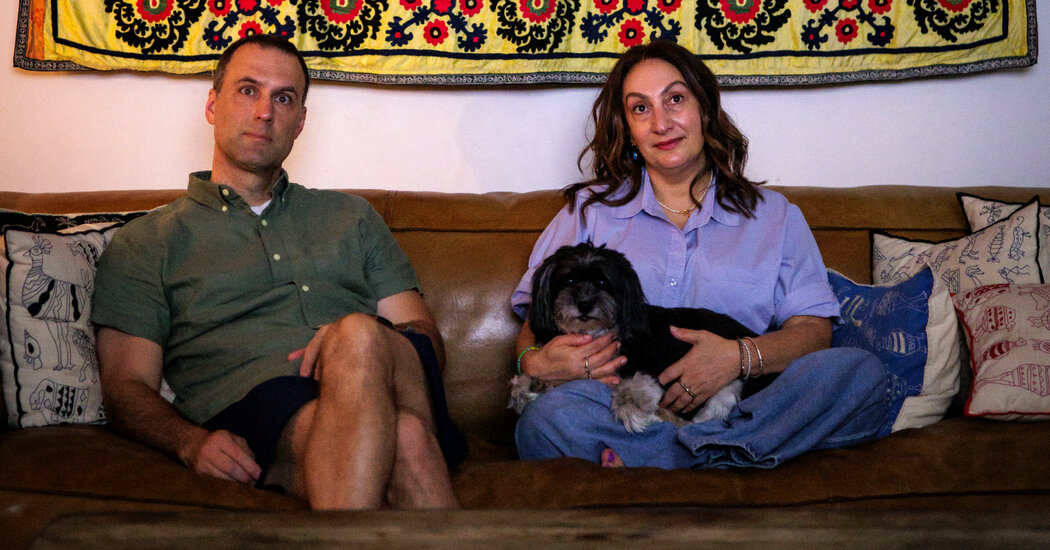Bank of England Keeps Interest Rates at 5.25%, a 15-Year High
Europe’s two largest central banks kept interest rates unchanged on Thursday, and did not offer any indication that rate cuts were coming soon, diverging from the signals sent by the US. Federal Reserve the day before.
The European policymakers noted progress in bringing down inflation, but they said it was too soon to let up on the restrictive monetary stance despite increasing evidence of economic slowdown.
“Should we lower our guard?” Christine Lagarde, the president of the European Central Bank, said at a news conference in Frankfurt. “No, we should absolutely not lower our guard.”
The Bank of England held rates at 5.25 percent, a 15-year high. The European Central Bank kept the deposit rate, one of the central bank’s three key rates for the 20 countries that use the euro, at 4 percent, the highest in the institution’s two-decade history. The other two rates were also left unchanged.
Globally, the struggle against high inflation has moved into a new phase. Price growth peaked last year, and now central bankers are focused on how to push inflation down to their 2 percent targets, while managing the adverse effects of high rates. As the global economy weakens, policymakers are trying to get the timing right for cutting interest rates, but in Europe, they are particularly cautious of signaling that these cuts won’t come too soon and risk reigniting inflationary pressures.
On Wednesday, the U.S. Federal Reserve held rates steady but officials indicated three cuts could take place next year. That increased market expectations of rate cuts for other central banks.
Elsewhere on Thursday, the Swiss National Bank held interest rates steady but Norway’s central bank unexpectedly raised interest rates to ward off persistent inflation; it said it expected to keep rates at current levels until late 2024.
In the eurozone, inflation slowed to 2.4 percent in November, the lowest in two years, easing faster than economists expected. That’s closing in on the European Central Bank’s 2 percent inflation target as energy prices have dropped over the past year and food inflation has slowed. But the bank said that inflation was likely to rise in the short term before easing again, more slowly than previously predicted, and reach the target in 2025.
At the same time, economic growth in the bloc has practically been at a standstill over the last year, and some policymakers and analysts remain concerned that monetary policy is too restrictive and could cause unnecessary economic pain. Staff at the central bank said economic growth would remain “subdued” in the short term. The bloc’s economy will grow by 0.8 percent next year, the bank forecast, lower than the previous forecast three months ago.
Traders are expecting the European Central Bank to cut rates in the first half of next year, potentially as soon as April, as the region’s economy sputters.
But Ms. Lagarde pushed back against these bets, saying that the Governing Council had not even talked about rate cuts at this week’s policy meeting. “No discussion, no debate on this issue,” she said.
Instead, she implied a long period of rates on pause. Rates were at levels, if maintained for a “sufficiently long duration,” that would bring inflation toward the target,” she said.
In Britain, rates were held following a faster-than-expected retreat in inflation, which dropped below 5 percent in October. Still, the inflation rate was more than double the central bank’s 2 percent target.
Troubling to some policymakers and analysts, the rate is also high compared to European neighbors, and workers on average are experiencing relatively fast wage growth, pushing up prices in the services sector.
Policymakers at the Bank of England were split on whether to keep rates steady, with a minority voting to raise them further.
“We’ve come a long way this year, and successive rate increases have helped bring inflation down,” Andrew Bailey, the governor of the bank, said in a statement. “But there is still some way to go.”
Reflecting the more challenging situation in Britain, where growth is weak but inflation pressures persist, the Bank of England gave no indications that rate cuts could be imminent. Indications that domestic price pressures remain quite strong mean traders are not expecting the central bank to cut rates until about the middle of next year.
“It’s really too early to start speculating about cutting interest rates,” Mr. Bailey said later in a televised interview.
The pound rose nearly 1 percent against the U.S. dollar after the rate decision as traders took stock of the differing views between the British and American central banks on future rate cuts.
“The Bank of England isn’t riding to the rescue of a flatlining economy,” Vivek Paul, a strategist at the asset manager BlackRock, wrote in a note. “It is still too early to declare victory in its inflation fight.”
The Bank of England “faces a tougher trade-off between protecting growth and controlling inflation than other developed markets,” he added, in part because there are relatively large numbers of people out of the work force. “That’s constraining how much the economy can produce and grow without sparking a resurgence in inflation.”
The central bank expects the economy to flatline until 2025. But the bank does not expect inflation to return to the 2 percent target until late 2025.
“Monetary policy is likely to need to be restrictive for an extended period of time,” the central bank said.
The minutes of this week’s meeting of Bank of England policymakers highlighted the possibility that rates could rise again, saying that “further tightening” would be required if there was evidence of “more persistent inflationary pressures.”
Policymakers at the bank remain divided on how best to ensure inflation drops quickly and sustainably. Six of the bank’s nine-person rate-setting committee, including Mr. Bailey, voted to hold rates. But the three others voted to increase the rate by a quarter point, arguing that there was a need to push against the risk of “more deeply embedded” inflation, according to the minutes. Despite weak economic growth, household incomes, once adjusted for inflation, were improving and the labor market was tight, the three policymakers said.


